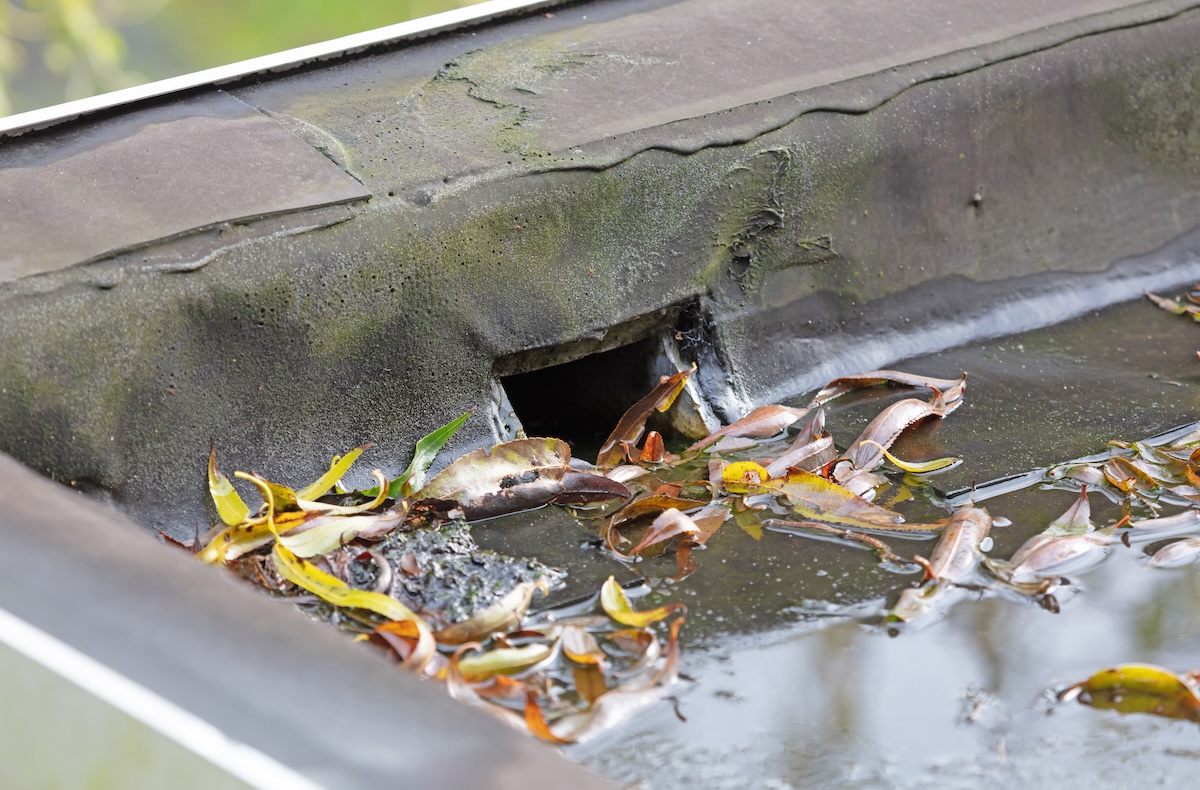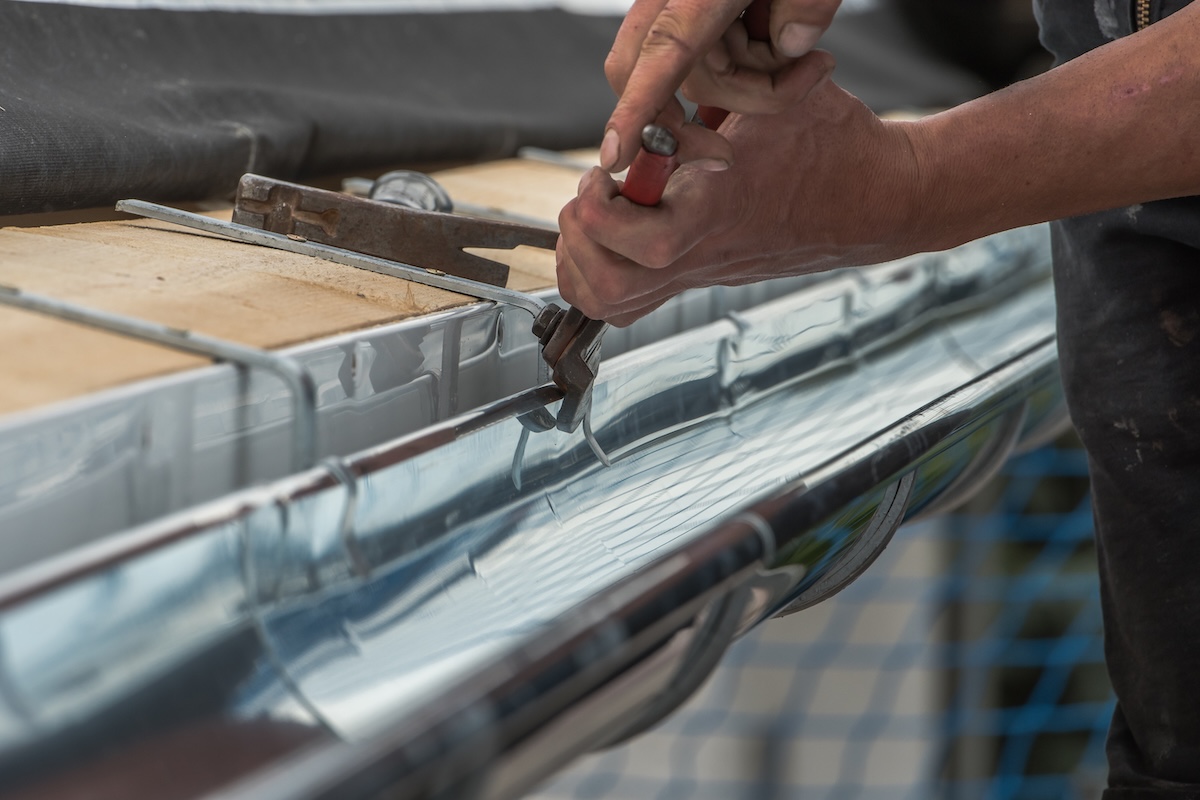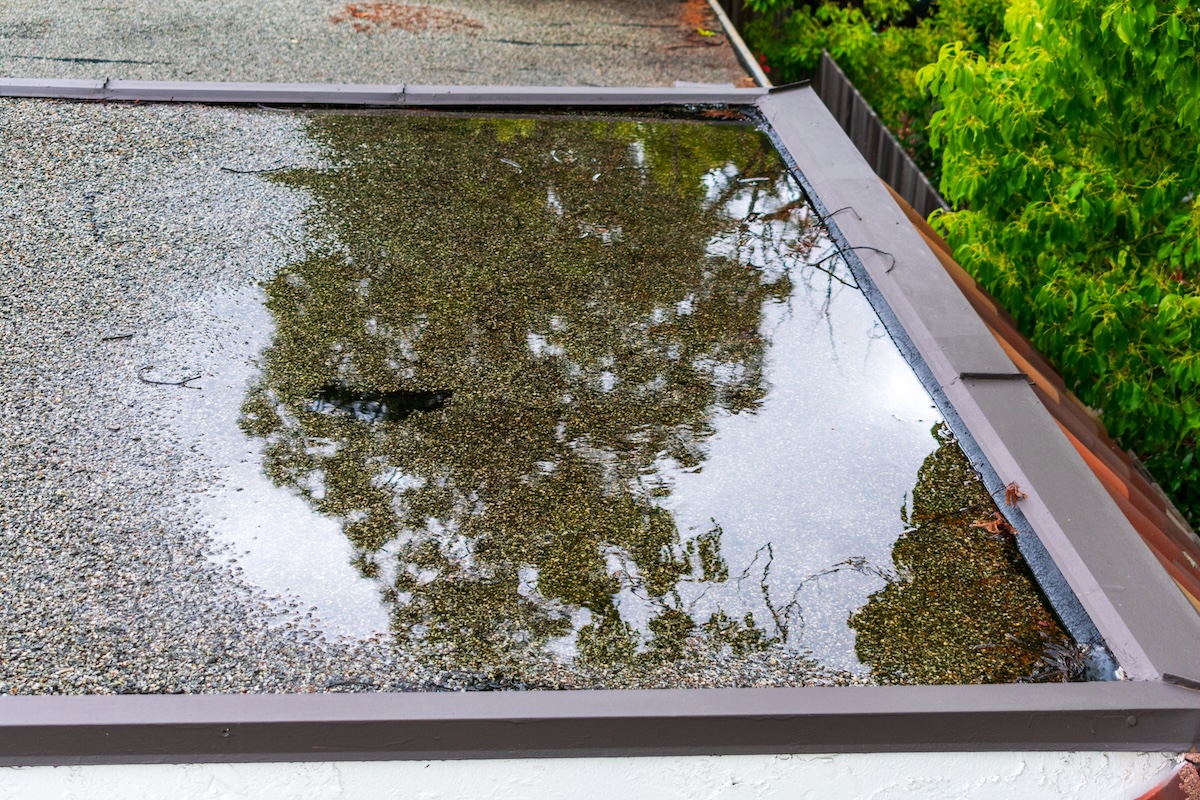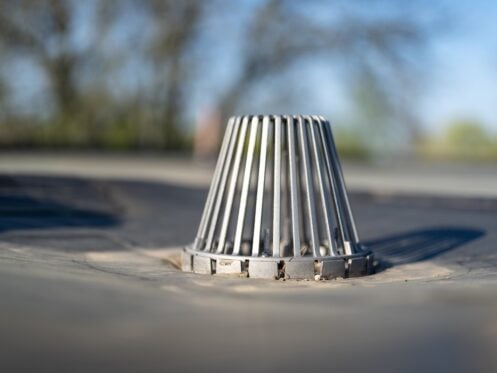Commercial roof drainage is one of the most important aspects of protecting a building from water damage, yet it’s often overlooked by property owners until problems arise. Without a properly designed drainage system, standing water can weaken the roof structure, cause leaks, and shorten the lifespan of even the highest-quality materials. Understanding the main types of drainage systems used on commercial roofs will help you make informed decisions about installation, maintenance, and long-term protection.
- Preventing water damage: Drainage systems protect roof membranes, insulation, and structural supports from moisture intrusion.
- Longevity: A well-designed system extends the life of your commercial roof.
- Cost efficiency: Addressing drainage properly prevents expensive structural repairs down the road.
❗️ Why Commercial Roof Drainage Matters
Unlike residential roofs, most commercial roofs are flat or low-slope, which makes them more vulnerable to ponding water. When heavy rain or snowmelt collects on a roof, the added weight places stress on the structure and increases the risk of collapse. Even when the roof remains intact, standing water accelerates membrane deterioration, clogs drains, and eventually seeps into the building.
In Indiana, where heavy spring rains, sudden summer storms, and freeze–thaw cycles are common, drainage is not optional, it’s essential. Poor drainage contributes to leaks, mold growth, and structural decay that can cost thousands of dollars to repair. Installing the right system, and keeping it maintained, ensures water is safely diverted away from the roof and foundation, protecting both the property and the people inside.
1. Internal Drains
Internal drains are placed in the center of a roof and connected to pipes that run through the building and discharge water at ground level. Because they are concealed within the roof design, they offer a clean appearance while managing large amounts of water.
- Advantages: Internal drains are highly effective for large flat roofs. They minimize standing water, reduce ice buildup along edges, and allow for multiple drains across a wide surface. Since pipes are hidden, they also help preserve the building’s exterior appearance.
- Disadvantages: These systems are more expensive to install than gutters or scuppers. They also require regular cleaning and inspections because clogs in underground pipes can be difficult to locate and costly to repair.
- Best suited for: Large warehouses, office complexes, and industrial buildings where water volume is high and exterior aesthetics are a concern.
In Indiana, internal drains are popular for buildings exposed to heavy rain or snow loads, since they efficiently move water off the roof before it can pool.

2. Scuppers
Scuppers are large openings installed at the edge of a roof that allow water to exit through the sides. They are often paired with downspouts or chutes to direct water safely away from the foundation.
- Advantages: Scuppers are simple, affordable, and effective. Because they allow water to flow freely off the roof, they require less maintenance than internal drains. Large scuppers also resist clogging better than smaller systems.
- Disadvantages: Without downspouts or proper chutes, scuppers can release water directly against the building, causing foundation issues. They are also less effective during heavy snow, since ice can block the openings.
- Best suited for: Small to mid-sized commercial buildings looking for cost-effective drainage.
For Indiana businesses, scuppers are a reliable option when paired with downspouts to handle stormwater from spring and summer rainfall.
3. Gutters
Commercial gutters work the same way as residential systems, collecting water along the roof’s edge and channeling it into downspouts. However, commercial gutters are typically larger to handle higher volumes of water.
- Advantages: Gutters are affordable, easy to install, and effective for many low-slope roofs. Seamless gutter options reduce leaks, and larger downspouts improve drainage capacity.
- Disadvantages: Gutters require frequent cleaning, especially in Indiana where fall leaves and spring debris can clog them. Without proper maintenance, gutters can sag, overflow, or separate from the roofline.
- Best suited for: Small to medium commercial properties with manageable roof sizes and regular maintenance programs in place.
Gutters are common across Indiana, but business owners must be committed to seasonal cleanings to avoid backups that cause roof leaks and water damage.

4. Slope-to-Drain Systems
Instead of relying solely on drainage components, slope-to-drain systems use the roof’s design to move water toward drains, scuppers, or gutters. This can be achieved by sloping the roof structure itself or by using tapered insulation that creates subtle pitches across the surface.
- Advantages: By encouraging natural flow, slope-to-drain systems reduce ponding water and extend the life of roof membranes. They require less maintenance than gutters or scuppers because water naturally runs off the roof.
- Disadvantages: These systems must be carefully engineered and are more expensive to retrofit onto existing flat roofs. If the slope is too shallow, water may still pond in certain areas.
- Best suited for: New commercial roof installations or major renovations where long-term performance is the priority.
In Indiana, slope-to-drain designs are especially effective during snowmelt and freeze–thaw cycles, when natural runoff helps prevent dangerous ice buildup.
👉 Risks of Poor Drainage
When commercial roof drainage is ignored or poorly maintained, problems can escalate quickly.
Common Issues That Arise
- Structural damage: Water adds weight, increasing the risk of sagging or collapse.
- Membrane deterioration: Ponding water accelerates UV damage and chemical breakdown of roofing materials.
- Leaks and mold: Moisture intrusion damages insulation and promotes unhealthy mold growth.
- Shortened lifespan: Roofs without effective drainage rarely reach their intended service life.
In Indiana, it’s common for poorly drained roofs to fail long before their warranties expire. Investing in proper drainage protects your bottom line.
⛈️ How Indiana Weather Impacts Drainage Systems
Local climate plays a huge role in drainage performance.
- Heavy rainfall: Sudden summer storms can overwhelm undersized gutters or drains.
- Snow and ice: Freeze–thaw cycles expand cracks and block scuppers with ice.
- High winds: Seasonal storms blow leaves and debris into gutters, creating clogs.
- Snowmelt: Large volumes of melting snow can overwhelm drainage systems not designed for rapid runoff.
These factors make routine inspections and preventative maintenance essential for Indiana property managers.

✅ How to Choose the Right Drainage System for Your Building
Selecting the right system requires evaluating your property’s unique needs.
Key Factors to Consider
- Roof size and slope: Larger roofs require internal drains or slope-to-drain designs, while smaller ones may use gutters or scuppers.
- Budget: Gutters and scuppers are more affordable upfront, while slope-to-drain and internal drains are long-term investments.
- Maintenance availability: If your staff cannot maintain gutters and scuppers regularly, a slope-to-drain system may be better.
- Building design: Aesthetic considerations may favor hidden systems like internal drains.
- Local climate: Indiana’s heavy rains and snow loads require higher-capacity drainage solutions.
- Future ownership: Long-term property owners benefit most from durable, low-maintenance systems.
🛠️ Maintaining Your Drainage System
Even the best system will fail without regular care.
- Schedule inspections twice a year: Spring and fall are ideal to prepare for heavy rain and snow.
- Clear debris regularly: Remove leaves, sticks, and dirt from gutters, scuppers, and drains.
- Check after storms: Inspect drains and downspouts for clogs after severe weather.
- Test water flow: Pour water into drains or scuppers to confirm proper function.
- Inspect seals and joints: Repair cracks immediately to prevent leaks.
- Document maintenance: Keep records for warranty compliance and insurance claims.
Consistent upkeep ensures your system performs when it’s needed most.
🏢 Protect Your Commercial Property With Expert Help
Commercial roof drainage is not something property owners can afford to overlook. The right system ensures water is managed properly, protecting both the structure and the people inside. Whether your building uses internal drains, scuppers, gutters, or slope-to-drain designs, each requires regular maintenance and expert oversight to perform effectively.
At Indy Roof & Restoration, we specialize in evaluating, installing, and maintaining commercial drainage systems built to withstand Indiana’s toughest weather. Our team provides professional inspections, customized recommendations, and long-term solutions that safeguard your property. Contact us today to schedule an evaluation and ensure your roof is equipped to handle whatever the forecast brings.

